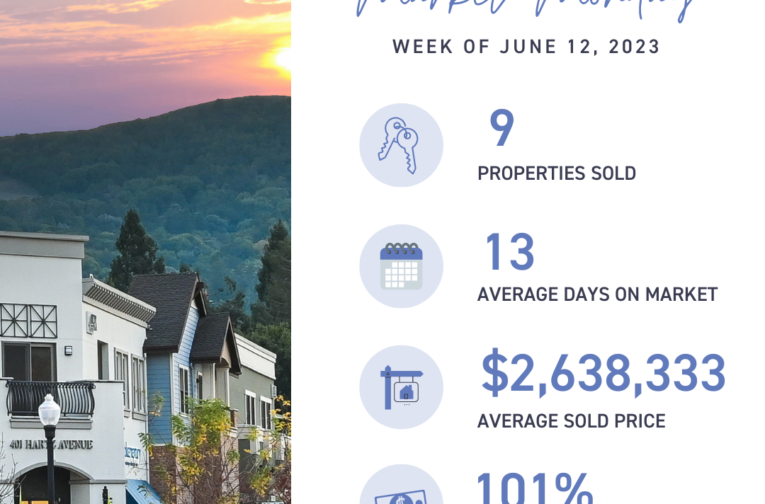Quick Take:
- Home prices were up year to date in Alameda and Contra Costa counties through May 2023. Notably, the median condo price in Contra Costa reached a new all-time high after increasing 19% this year.
- Sales are growing rapidly as more new listings hit the market to help satisfy excess demand in the East Bay, driving prices higher.
- Months of Supply Inventory has declined significantly in 2023, homes are selling more quickly, and sellers are receiving a greater percentage of asking price, all of which highlight an increasingly competitive environment for buyers.
Higher Inventory, Higher Prices
Price appreciation has been substantial across most of the East Bay this year, to say the least. Single-family home prices rose 20% in Alameda and 17% in Contra Costa, while Contra Costa condo prices hit an all-time high in May. Increasing demand and low, but rising inventory are driving the rapid home price appreciation that the East Bay has experienced this year. Last year, single-family home and condo prices peaked in April, as buyers rushed to lock in a lower mortgage rate. The Fed announced rate hikes at the end of 2021 that would swiftly affect rates in 2022. The average 30-year mortgage rate rose 2% in the first four months of 2022, crossing 5% for the first time since 2011. That 2% jump caused the monthly cost of financing to increase 27%, so buyers rightly rushed to the market. As rates rose higher, the market cooled and home prices fell in large part to accommodate the higher cost of a mortgage. Both supply and demand were lower than normal in the second half of 2022.
In 2023, demand started to rise again despite elevated mortgage rates and was met by a high number of new listings. Price increases this year have been largely a function of more homes coming to market and inventory growth, which is counterintuitive to supply and demand. Supply was so low that more homes were able to better match buyers to a desirable property, giving sellers more pricing power. As demand increases through the summer months, competition among buyers will climb with it, raising home prices.
Inventory is rising, but sales are growing faster than new listings
Single-family home and condo inventory, sales, and new listings rose over the past four months, although all remain at depressed levels. The number of home sales is, in part, a function of the number of active listings and new listings coming to market. Even though all those metrics are far below typical levels, these trends are all signs of a healthier market. Currently, inventory is still quite low relative to demand, so far more new listings could come to the market. Potential sellers who have fully paid off their property are in a particularly good position if they don’t have to finance their next property after the sale of their home. Since January, sales jumped 116% while new listings rose 63%.
As buyer competition has ramped up and sellers are gaining negotiating power, sellers are receiving more of their listed price. In January 2023, the average seller received 95% of list price compared to 104% of list in May. Inventory will almost certainly remain depressed for the rest of the year, and the market will likely only get more competitive in the summer months.
Months of Supply Inventory declined in May, moving further into a sellers’ market
Months of Supply Inventory (MSI) quantifies the supply/demand relationship by measuring how many months it would take for all current homes listed on the market to sell at the current rate of sales. The long-term average MSI is around three months in California, which indicates a balanced market. An MSI lower than three indicates that there are more buyers than sellers on the market (meaning it’s a sellers’ market), while a higher MSI indicates there are more sellers than buyers (meaning it’s a buyers’ market). The East Bay market tends to favor sellers, especially for single-family homes, which is reflected in its low MSI. MSI has trended even lower over the past four months for both single-family homes and condos, meaning the market more strongly favors sellers. The sharp drop in MSI occurred due to the higher proportion of sales relative to active listings and less time on the market.




